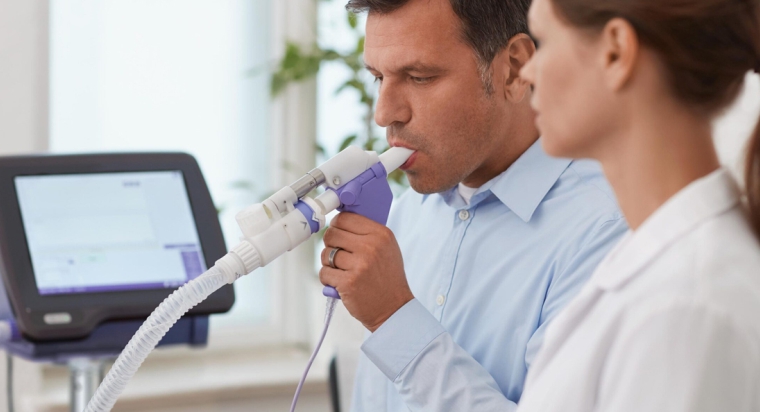Taking care of our inner organs is a critical aspect of our life. The lung, a vital organ in our body, needs to be tested from time to time to prevent damage. To protect our lungs, we have to consistently go for tests that show us the condition of our lungs.
This article explains what the pulmonary function test is, the types of the PFT, and what to expect during this testing.
What is a Pulmonary Function Test?
A Pulmonary Function Test (PFT) is a test that measures how well the lungs are working. It measures the rate at which the lungs function and how well the lungs transfer oxygen to the blood.
Depending on the type of testing done, pulmonary function tests involve soft breathing or deep inhalation and exhalation. Also, since a PFT is noninvasive (it doesn’t involve tools that physically enter the body or break the skin), they don’t require any tools inside the body.
Types of Pulmonary Function Test
Depending on the diagnosis of a doctor, PFTs differ. These are a few pulmonary function tests and how they work:
● Spirometry
Spirometry is one of the most popular types of pulmonary function tests. It’s used to measure how well your lungs function by taking on a forced and deep breath. It measures your degree of breathing, as well as how well and fast you can empty the air in your lungs.
The test is performed by placing a clip that is connected to a mouthpiece on your nose, while the mouthpiece is placed in between your lips. Then, the patient will be asked to blow out a fast and deep breath.
Spirometry helps to diagnose breathing problems like Chronic Obstructive Pulmonary Disease (COPD) or asthma.
● Body plethysmography
This PFT is used to measure how well a patient inhales air. To take the body plethysmography test, you will have to breathe in deeply. This test helps in checking how much air goes into your lungs when you inhale, and how much air stays in your lungs after inhalation.
Doctors use the body plethysmography test to check if a breathing disease has damaged the lungs. It is used to check if the space in the lungs has been reduced or if the airways have been narrowed.
● Lung diffusion capacity test
This type of PFT helps to show how the small air sacs in the lungs work. A lung diffusion test is used to see how your lung diffuses oxygen and carbon dioxide in and out of your blood.
A lung diffusion test is usually used to see how the lungs of people with breathing problems are functioning. This test is also used to monitor the patient’s healing process.
● Bronchial provocation test
The Bronchial Provocation Test also called the Methacholine challenge test, is used by doctors to diagnose whether or not you have asthma. In this test, you will be asked to inhale a dose of a medication called a provocative agent. This medication will cause reactions in the lung airways.
This type of PFT helps in evaluating how active the lungs are and how they react to dry substances.
How to Prepare for a Pulmonary Function Test
Since pulmonary function tests are mainly for the diagnosis of certain lung diseases, there are numerous things to note before going in for them. Here are some of them:
● Medications
In some cases, the patient is asked to stop using some medications that open the lungs’ airways before the testing day. Certain painkillers that can also alter the results are canceled within the period of the test.
It’s best for the doctor conducting the test to know all the medications his patient is taking within that period, to prevent any issues with the test results.
● Smoking
Four hours before the test, it’s advisable to keep away from smoking. Smoking has a high chance of altering the pulmonary function test results.
● Food
It is also important to note that the food eaten before the test has high effects on the test results. Caffeine is a perfect example of a food substance to avoid before and during the testing period; it causes the airways to be more open than normal. Also, avoid eating heavy foods or overeating before taking a PFT.
● Clothing
One major thing to avoid when preparing for a pulmonary function test is tight clothing. Tight clothing might affect the testing results because it might allow the airways of the lungs to be more open than usual.
What to Expect During a Pulmonary Function Test
If you have been scheduled for a pulmonary function test, your should know that the tests are simply noninvasive screening and as such, they are painless. All you have to do is either inhale or exhale into a small tube. After the test, you can continue with your daily activities.
Final Words
Ensure to be honest with your doctor about your medical history before the testing process. Also, follow their instructions. That’ll help them to make the right diagnosis and type of test to administer.
If you have other questions about Pulmonary Function Tests or wish to connect with a pulmonologist, don’t hesitate to contact us anytime. Our professionals are always available to attend to your needs.



 Translate
Translate

